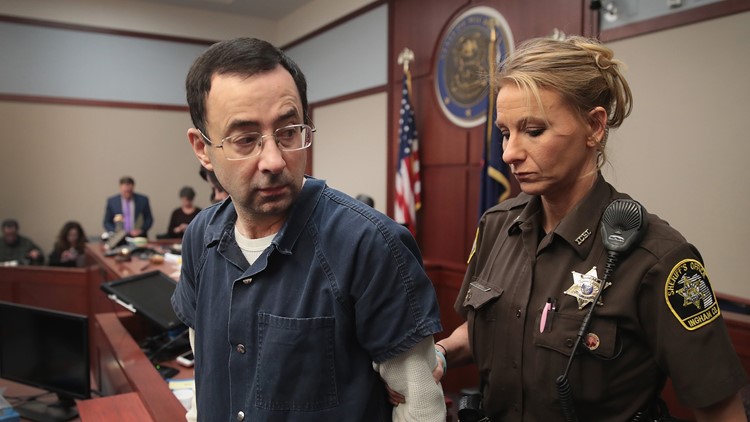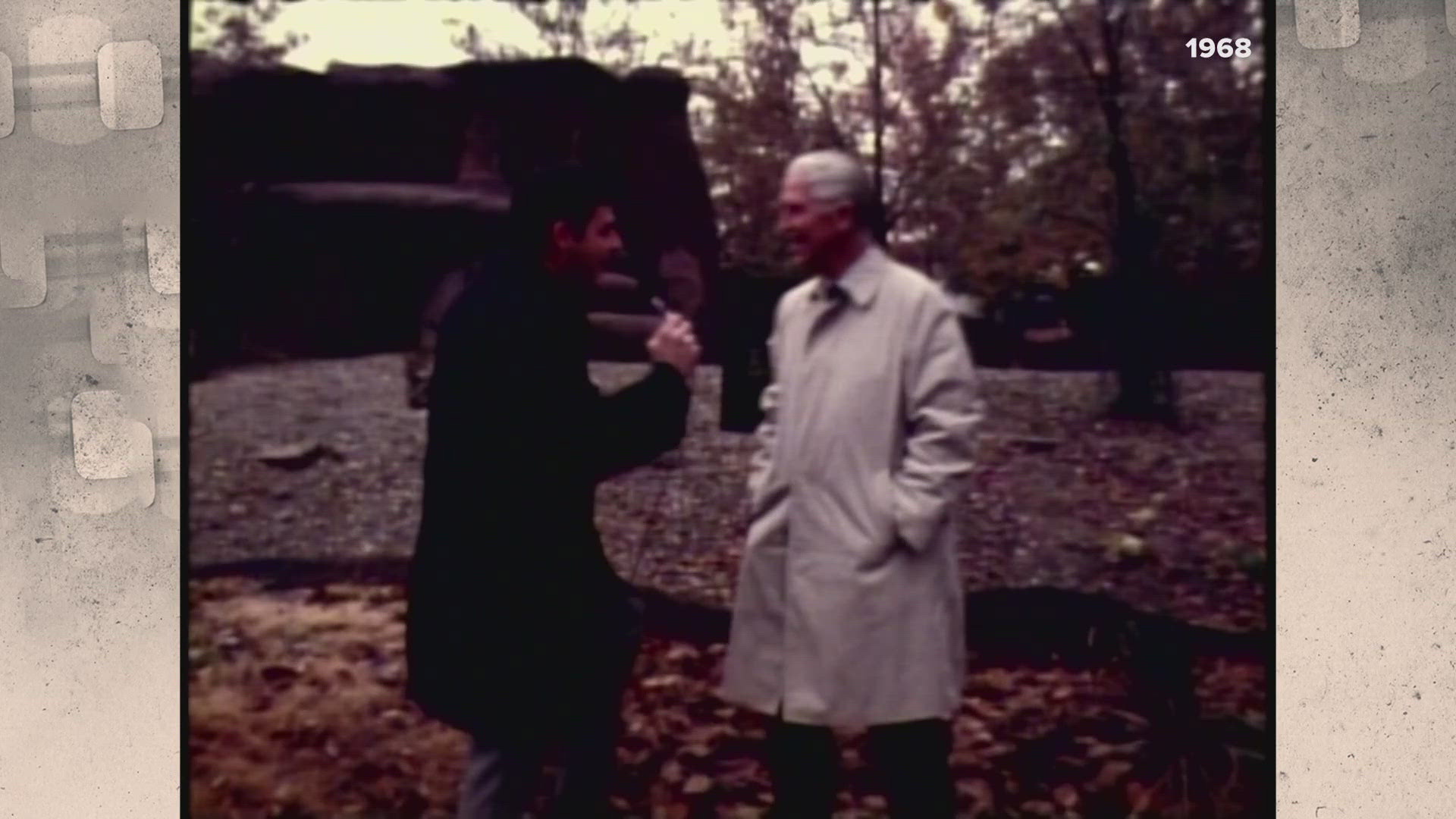The phone rang. It was Dr. Larry Nassar.
"Hey, man, what’s going on?" Dr. Steven Karageanes recalls saying.
Nassar got straight to the point: "I just wanted to call and let you know that I’ve been accused of sexual assault."
It was Thursday, Sept. 8, 2016, just four days before allegations against Nassar would be made public.
Karageanes, a former president of the American Osteopathic Academy of Sports Medicine, said he took his phone into another room, away from his family. For the next 21 minutes, he listened as a fellow osteopath he had known for 25 years strongly denied the allegations of two former patients.
Nassar asked whether Karageanes would speak to Michigan State University Police and explain pelvic medical procedures, Nassar’s chosen specialty. Nassar also asked his friend to write a letter of support and help gather other doctors, trainers and therapists to fend off the women, who said he molested them during treatments when they were teenagers.
Karageanes said he would help. And it was only after additional evidence piled up that he and others realized how fully Nassar had used them.
"He groomed me for 28 years to help him commit sexual assault," Karageanes said in a statement read by a prosecutor during Nassar’s January sentencing on seven counts of criminal sexual conduct. Karageanes said he was Nassar's pawn. A means to an end. A victim of Nassar's "devious, underhanded and sickening ... machinations."
What comes through loudly in his and more than 150 other court statements — and in interviews conducted by USA TODAY Network reporters in Michigan and Indiana — is that the hundreds of girls Nassar molested over three decades were not the only people groomed to perpetuate his abuse. When the truth came out, parents, coaches, trainers and medical professionals felt they had been duped for years into believing in a man who had carefully cultivated a wholesome, helpful image, and attained near celebrity status as the foremost medical expert in a niche sport.
People at every level failed to protect Nassar's victims.
At least 29 of the 156 survivors who gave impact statements said they told someone — whether a boyfriend, fellow gymnast, parent, coach or official — about the abuse. Yet on and on it went.
Survivors said the high-pressure culture of USA Gymnastics aided Nassar as he preyed on children. Other physicians were called on to defend him. The connections Nassar nurtured in sports, medicine and academia helped mask his abuses. And the institutions that gave rise to his fame failed to put sufficient checks in place to protect the children in their care.
USA Gymnastics and MSU declined to comment for this story, citing pending litigation.
When Nassar agreed last year to skip a trial and plead guilty to sexually abusing the young girls any lingering doubt about him was removed.
"That's when it just like punched me in the head, you know," Karageanes said recently. "It means everything the last few months, oh my God, the last few years, oh my God, all these years — I mean, it's all suspect. Everything."
'One lonely tear running down my cheek'
A woman identified only as Victim 125 confronted Nassar with a question that had haunted her for years.
"Who was that first girl?" she asked Nassar in Ingham County Circuit Court. "Am I her? Do you even remember? Do you even remember what we will never forget? Can you even remember, Larry, when it all began?"
She was 8 years old in 1988 when Nassar arrived at the Great Lakes Gymnastics Club in Lansing, Michigan. It was there that Nassar, then in his mid-20s, teamed up with two young upstart coaches who would rise in the sport together: John Geddert, who would go on to coach an Olympic champion, and Kathie Klages, who would eventually become MSU’s gymnastics coach.
Nassar started medical school at MSU that year, and had already accumulated years of sports training experience. As a student at North Farmington High School, he was the trainer for the girls’ gymnastics team. Trainers treated minor injuries, and one former classmate recalled Nassar proudly carrying a black medical bag around school.
Nassar continued athletic training throughout college and, by 1986, the energetic and friendly young man started a decades-long relationship with Indianapolis-based USA Gymnastics, the sport’s national governing body.
In a court statement directed at Nassar, Victim 125 recalled the young medical student being at the Great Lakes gym "almost every single day for hours with your big black medical bag full of supplies over your shoulder."
Victim 125 said she was 12 in 1992 when Nassar invited her to help with a flexibility study he said he was conducting on behalf of the MSU medical school. The USA TODAY Network typically doesn't identify victims of sexual abuse without their consent.
"My mother was out of town, but granted permission for me to go to your house because not only did she love and trust you, but because I was supposed to be one of several subjects participating in your Michigan State study," Victim 125 recalled in court.
A neighbor drove her to Nassar’s apartment. When she got there, it was just her and Nassar. There were no other subjects for his alleged study. Trusting Nassar, the pre-teen girl followed his direction.
He told her to take a bath in his tub, which would help relax her muscles, she said in court. Then he laid her, naked, on a treatment table in his living room.
She reminded Nassar in court "... you massaged the entirety of my 12-year-old body, suggesting that I relax as you slipped your adult fingers in and out and in and out of my body. That was one of the many, many times that your hands were in me, on me, over the next many years."
Victim 125 said in an interview last month that Nassar’s alleged study left her confused.
"I knew when I left there that something had happened," Victim 125 said. "I didn't know I was sexually abused. I just knew that I felt really uncomfortable and that something had gone on, but I didn’t know what."
Former Great Lakes gymnasts Christina Barba and Trinea Gonczar said that Nassar used a similar ploy on them around that time. They may have been among Nassar’s original victims.

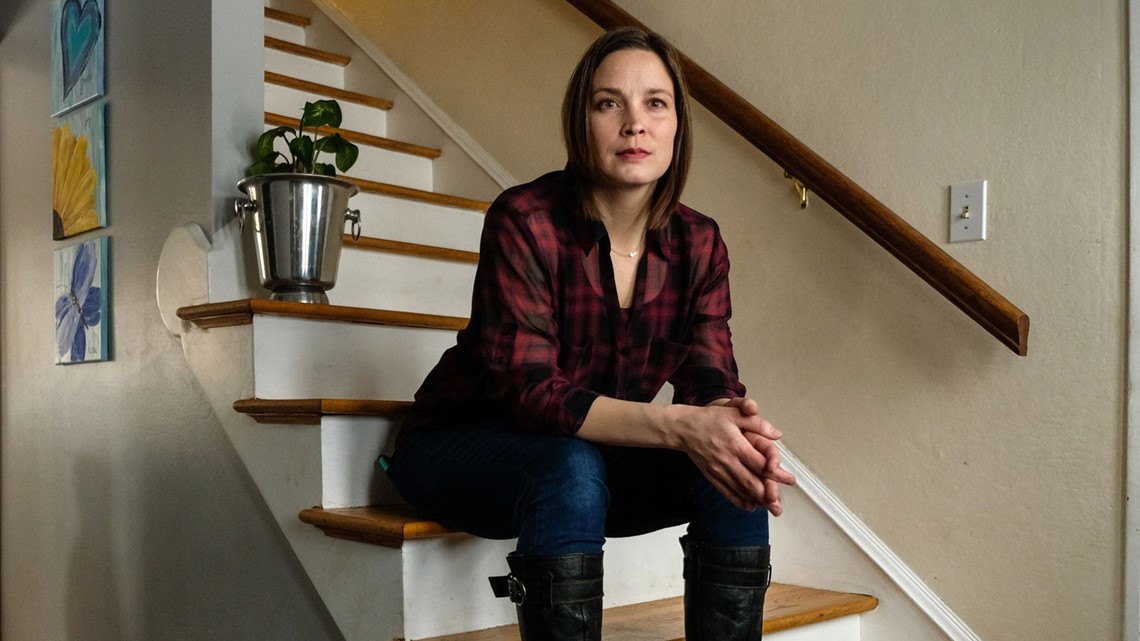
Barba, in a recent interview, said Nassar invited her to his apartment so he could practice new techniques.
She said he showed her a picture in a textbook. It depicted the pelvic floor, a group of muscles, tendons and nerves that come together in the pelvis near the genitals. He was not yet a doctor, and he was already beginning to focus on that part of the anatomy. And he was already using it to justify child abuse.
Barba said Nassar had her sit in a bathtub. He stretched her legs and then performed an invasive procedure with his hand.
Barba said she trusted Nassar, who had always been nice to her, but the situation made her uncomfortable.
"I remember having, like, one lonely tear running down my cheek," she said.
A self-made expert on the pelvic floor
Nassar received his medical degree in 1993, and later positioned himself as an expert on pelvic floor treatments.
He became adept at relieving pain caused by the rigors of gymnastics, but he also took liberties with the girls that went far beyond their medical needs, according to statements from numerous survivors. He sometimes groped their breasts. And, no matter what their ailment, whether a sore neck or ankle, some said, Nassar's treatment often involved penetration of their vaginas.
There is an accepted osteopathic intravaginal procedure for adult women with specific problems, but it is considered a last resort to be used only in the most severe situations. Karageanes said it should not be used on prepubescent girls. Some victims said Nassar assaulted them this way every time they visited him.
Nassar’s career shifted into high gear after he went to his first Olympic Games in 1996, where the Magnificent Seven won the first-ever team gold medal for the U.S. He also was appointed USA Gymnastics' national medical coordinator. The following year he was hired as an assistant professor at the MSU College of Osteopathic Medicine.

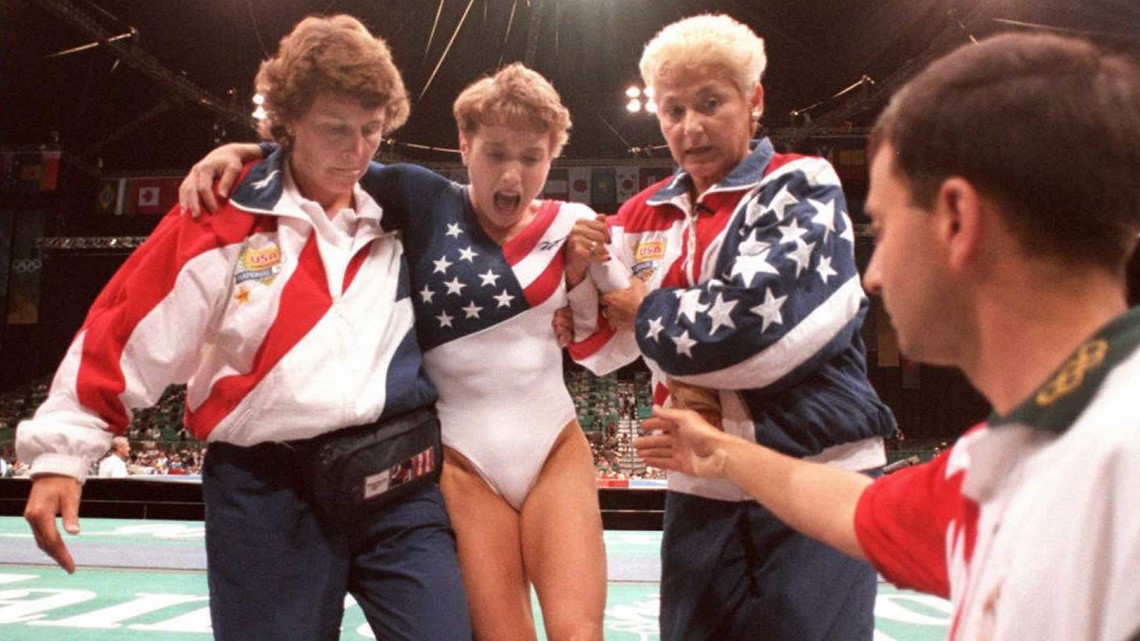
Nassar burnished his image by volunteering at schools, speaking at gymnastics workshops and sports medicine conferences. He secured a U.S. patent for his prototype of an ankle support device. He wrote a textbook chapter establishing guidelines for performing medical techniques near genitalia. He filmed more than 1,000 videos about osteopathic techniques, some of which were done close to genitalia, but did not involve penetration.
The United States Olympic Committee awarded Nassar a grant in 1990, while he was still in medical school, to study changes in the wrists of female gymnasts.
Prominent coaches and doctors referred athletes to Nassar for treatment. He collected state, regional and national honors that bolstered his credibility in gymnastics and sports medicine, and brought prestige to both MSU and USA Gymnastics.
The United States Elite Coaches Association named him National Contributor of the Year six times from 1993 to 2002. "The highly respected, visible, eager osteopathic physician will be an excellent addition to the faculty," the MSU search committee said.
"He essentially did a lot of humble bragging," Karageanes said. "He always had a USA Gymnastics or Michigan State shirt on, always."
Nassar eventually became known as The Gymnastics Doctor, one of the only physicians specializing in the sport, as well as a self-made expert in pelvic floor treatments. "So when I say 'self-made,' I mean he literally put himself out there as this guy who knows how to treat this," Karageanes said.
Karageanes heard Nassar speak about medical techniques Nassar used that involved placing his hands near young gymnasts’ genitalia after bunching up their shorts. He also saw photos of Nassar demonstrating those techniques.
The procedures were invasive enough that Karageanes once asked Nassar, "aren't you worried about being sued ever by touching girls like this on their bottoms?"
Nassar laughed.
Then he rattled off a long list of resources supporting pelvic floor treatment, citing specific websites and articles. He never seemed defensive about it. And he was always prepared to talk about how important it was.
Later, Karageanes said he realized all of those efforts were Nassar trying to normalize his predatory behavior.
"He worked very hard at that," Karageanes said.
To disguise what he was doing, Nassar would describe his treatment in different ways to different people, presenting it as noninvasive to the medical world, while penetrating the vaginas and rectums of gymnasts under the guise of healing them. Many of his victims were so young, naïve and trusting that they didn’t realize they were being abused.
For decades, the difference between what Nassar said and did — and the deference of patients, parents and other doctors — would create confusion that allowed him to continue molesting girls.
An environment ripe for abuse
Instead of providing strong defenses against such a predator, the gymnastics culture placed few boundaries between Nassar and the girls he would groom and abuse.
USA Gymnastics was so confident in its doctor back in 2000 that it sent out the following message to gymnasts attending its National Talent Opportunity Program Training Camp: "If you or anyone in your room has a problem at night (or any time), please call Dr. Larry Nassar, Debbie Van Horn or a USA Gymnastics staff person. Please do not call your personal coach."
The Olympic organization failed to prevent Nassar from treating girls alone in hotel rooms and in dorm rooms at its national training center in Texas, known as the Karolyi Ranch. Many of the women who spoke in court during Nassar’s sentencing described this as an environment ripe for abuse.
The girls in Nassar’s orbit were taught from a young age what it takes to be an elite gymnast: discipline, obedience and a high tolerance for pain. Withstanding the pain meant keeping quiet, which cultivated a mindset among the young athletes that their voices didn’t matter.
"From the beginning we are taught to soldier on through intense training sessions, through the emotional roller coaster of competition, through injury and fatigue, through pain," former gymnast Chelsea Williams said.
When gymnasts were injured, they were sometimes required to see Nassar.
The number of victims rose.
In 2013, USA Gymnastics made Nassar a "core member" of a Medical Task Force established to review the organization's "practices, procedures and protocols regarding athlete care." Among its responsibilities: develop best practices for medical team members, including "ethical obligations for addressing or reporting significant issues."
A year later, former USA Gymnastics President Steve Penny praised Nassar as being "instrumental to the success of USA Gymnastics at many levels, both on and off the field of play."
In the process, many gymnasts were led to believe that Nassar using his fingers to penetrate their vaginas and rectums was a necessary, and routine, part of their osteopathic care.
"Who was I to question his treatments or, even more, risk my chance at making the Olympic team or being chosen to compete nationally, and, after all, he was recommended by the national team staff and he treated us monthly at all of our national team camps," 2012 Olympic gold medalist Jordyn Wieber said during the Ingham County court hearing. Wieber, a Lansing area native, trained with Geddert at Twistars.
'All the girls loved Larry'
USA Gymnastics and others missed several warning signs of pedophilia.
Child safety advocates recommend that organizations that deal with children prohibit adults from being alone with children, from giving them gifts and from emailing and texting children directly. But Nassar did all of that.
And he took advantage of the harsh gymnastics culture. Several survivors said in court that verbal abuse was common from coaches, including Nassar’s longtime friend, Geddert, who owned Twistars in Dimondale, a suburb near Lansing. Nassar volunteered there as a trainer. Neither Geddert, whose USA Gymnastics membership was suspended in January, nor his attorney responded to requests for comment.
Like many sexual predators, Nassar positioned himself as a helpful "nice guy."
In a culture where overeating was discouraged, food and water intake was closely monitored and body shaming was common, Nassar slipped the girls unsanctioned Skittles and Starburst. He commiserated with them about the pressures of the sport. He gave them what they perceived as a safe space, away from stern coaches they feared.
"Every Monday he would come to the gym and everyone was always so happy to see him," said Brooke Hylek, giving a statement at Nassar’s sentencing. "All the girls loved Larry and trusted him."
Nassar sought deeper connections, too, as the girls’ close friend and confidant. He texted them, sent them messages on Facebook, gave them nicknames and shared adult details about himself, such as his preferred beer.
He played on their desire for Olympic greatness, hanging pictures of top athletes in his office. Some women remembered looking up at the images as he assaulted them.
Gift-giving is considered a possible warning sign of pedophilia, especially when only certain children receive them, and is banned from some gyms, but no one appears to have stopped Nassar.
He gifted Kassie Powell, a track athlete, an Olympic sweatshirt she wore around the house for weeks. Emily Morales, a gymnast, got an autographed towel from the London Olympics. Alexis Alvarado was given autographed photos of famous gymnasts. Others received Olympic pins and one girl was given a practice leotard.
For Isabell Hutchins the gifts were even more personal — 1996 Olympics swag featuring the event’s mascot, Izzy.
Isabell was gifted figurines and playing cards.
"And there were Izzy Band-Aids for Izzy boo-boos because of all the injuries I had had," Hutchins said during Nassar’s sentencing. "He even wrote me a letter and he said, 'Dear Izzy, I am so proud of you having such an awesome season this year. Did you know that the 1996 Olympic mascot was Izzy? Well, enjoy. And, of course, I have a pair of Izzy socks from the 2000 Aussie Olympics.
"Love you, girl. Larry.'"
But the trust Hutchins, Hylek, Powell, Morales, Alvarado and hundreds of other girls put in Nassar was betrayed. They were all assaulted.
Hutchins brought the Izzy figurines into the courtroom during Nassar’s sentencing. After her statement, she dropped them in the trash.

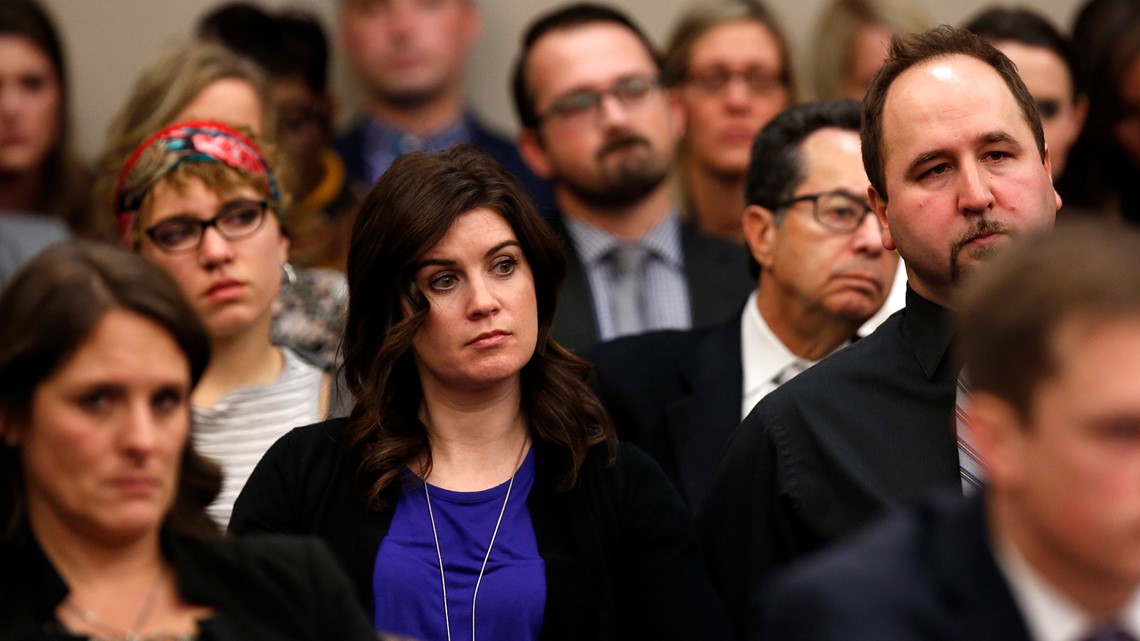
'Instead of being protected, I was humiliated'
Some girls did complain. But Nassar’s connections, reputation and careful attention to victim grooming repeatedly worked in his favor, as did the ambiguities he created about the procedures he performed.
Former gymnast Larissa Boyce told the court she raised concerns to MSU coach Kathie Klages about Nassar’s treatments as early as 1997. According to a lawsuit, Klages, who started working with Nassar at Great Lakes, asked other gymnasts in the Spartan Youth program if Nassar had done anything to them.
A second gymnast spoke up.
But rather than calling police or MSU officials, Boyce said Klages went to Nassar. "Instead of being protected," Boyce said in court, "I was humiliated. I was in trouble, and brainwashed into believing that I was the problem. This MSU employee then fed me back to you, the wolf, to continue to be devoured."
Klages' attorney declined comment, citing a pending lawsuit. In 2017, Klages told police she did not remember Boyce coming to her.
One of the women who met Nassar at Great Lakes in the 1980s said a very close friend came to her in 1997. "I think Larry did something bad to me," the friend told Gonczar.
"I asked her what he had done," Gonczar said in court. "She explained he vaginally manipulated her. I calmed her down and explained to her what happened to her was completely OK as it happened to me all the time."
That conversation upset Gonczar when she eventually realized the treatment she and her friend had received was actually sexual abuse. Gonczar said she recently sought counseling.
Michigan police departments twice investigated Nassar prior to his arrest in 2016, once in 2004 and again in 2014. The first investigation was never sent to prosecutors. The second one was, but no charges were filed.
In early 2014, MSU graduate Amanda Thomashow reported that Nassar massaged her breast and vagina after sending out the only other person present during an exam at MSU. She told him to stop, but he did not until she physically removed his hand from her. The university started a Title IX investigation and its police department started a separate criminal investigation.
Nassar went to William Strampel, one of his bosses at the time, for support. Strampel received updates on the status of the Title IX investigation throughout, according to emails obtained through a public records request.
The investigation relied on the medical opinions of four MSU employees who had close ties to Nassar. They determined that Thomashow received an appropriate medical procedure and likely misinterpreted it as sexual assault because she wasn't familiar with osteopathic medicine and wouldn’t know the "nuanced difference."
"As I see it, Amanda was abused twice," Suzanne Thomashow said of the Title IX process, specifically pointing to the "nuanced difference" line that said her daughter didn’t understand what happened.
Suzanne Thomashow, a doctor, said she was furious when Amanda told her what Nassar did. Suzanne Thomashow knew it was a sexual assault, but she thought it was an isolated incident. She stopped referring patients to Nassar after that and didn’t send any of her daughters back to see him.
Suzanne Thomashow would later learn that one of her other daughters, Jessica, had been sexually assaulted by Nassar years before.
As a result of the 2014 investigation, Nassar agreed to have another person in the room during procedures of "anything close to a sensitive area" and would modify procedures to have "little to no" skin-to-skin contact. But police sayStrampel later told them that he didn’t see a need to ensure Nassar followed those protocols, because Nassar had been “cleared of all charges” and “exonerated,” according to a police report.
Strampel told Nassarin an email that he was happy the complaint had been resolved and that Nassar was back to full clinical duties.

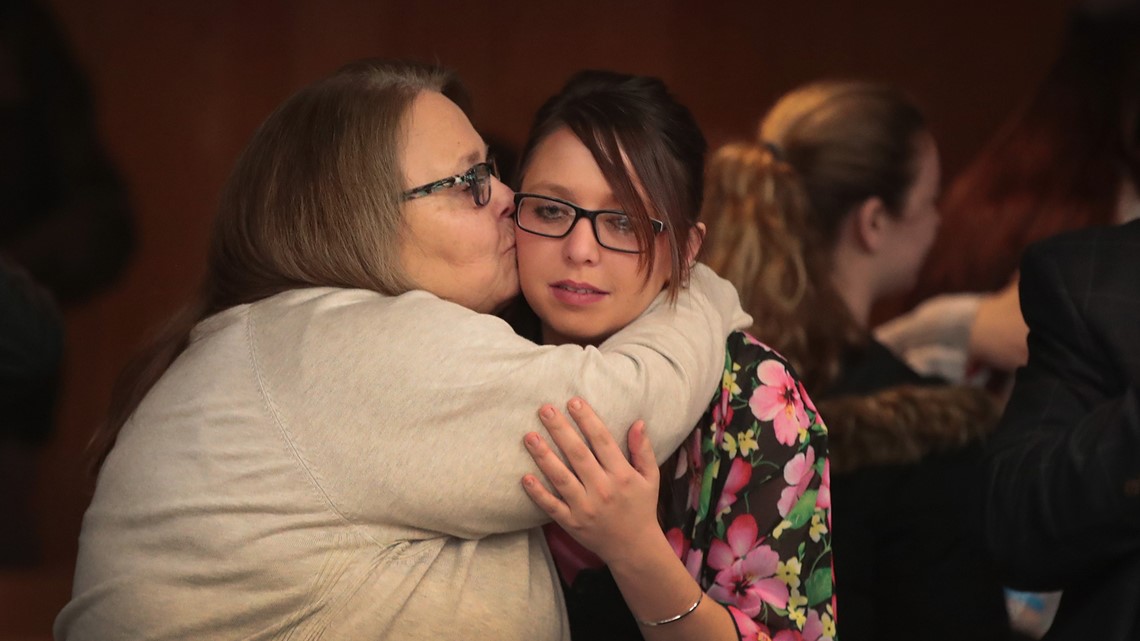
In 2015 yet another complaint was received, this time by USA Gymnastics. It prompted USA Gymnastics to quietly release Nassar. The organization notified the FBI, but no one else. Nassar continued working with girls for another year at MSU and Twistars,while the FBI investigation languished.
USA Gymnastics previously said it was told not to interfere with the FBI's investigation and interpreted that to mean it could not speak about the allegations.
At least 20 women and girls have said Nassar abused them after MSU and USA Gymnastics had been made aware of allegations against the doctor, records show.
On. Dec. 14, Strampel stepped down from his post as dean of the College of Osteopathic Medicine, citing medical reasons. On Feb. 9, MSU interim President John Engler moved to fire Strampel for his failure to enforce the protocols imposed on Nassar. Strampel is also a focus of the Michigan Attorney General’s Office’s investigation of MSU. His attorneys declined comment.
Respect for Nassar was ‘through the roof’
Nassar’s reputation among coaches also helped him evade detection.
Over 15 years, longtime gymnastics coach Patrick Hulliung relied on Nassar’s recommendations for training methods that prevent injury. Hulliung attended the doctor’s seminars, read his books, consulted with him about injuries and sent athletes to him for treatment.
Hulliung even invited Nassar to his gym, the World Class Gymnastics Center in Belleville, Illinois, to screen athletes.
"Respect level for him was through the roof," Hulliung said. "He was the best."
Never, in all those years, did Hulliung hear a whisper of allegations against the famed doctor. There were rumors about coaches in the sport, sure. But not Nassar.
So Hulliung said he was horrified in January 2016 when Samantha Ursch, a former gymnast whom he regarded as family, described in detail how Nassar had inserted his fingers into the most private areas of her body.
The medical appointment had happened five years earlier, when Ursch was suffering back pain as a senior at Central Michigan University. The 22-year-old tried to justify Nassar’s actions. Teammates told her they had experienced something similar. She called her mom, who argued something didn’t sound right. Ursch defended Nassar, but she said "the feeling of wrongdoing haunted my mom."
It was Ursch's mother who prompted her to tell Hulliung and another coach while they were visiting each other in Florida.
Hulliung said he couldn’t sleep that night. He felt guilty for being one of the people who recommended Nassar to Ursch.
"I knew it was wrong from the moment she said it to me," he said.
But he hesitated. He wanted to give Nassar the benefit of the doubt. So, when he returned to Illinois days later, he met with his friend Dr. Richard Lehman, medical director for the U.S. Center for Sports Medicine in St. Louis.
Lehman said in a recent interview that the coach looked terrible. Hulliung relayed Ursch's story and asked Lehman what he thought about Nassar’s techniques.
"In 33 years of this," Lehman said, "and, you know, going to a million meetings and hearing a million talks and reading the literature and kind of knowing everybody in sports medicine, I’ve really never heard of anything like this."
Lehman said he had never heard of a technique like that to treat back pain.
"That's just full-on sexual assault," Lehman told Hulliung. "I just can't put it any other way."
The coach hung his head.
"That's kind of my take on it as well," Hulliung replied.
"It was a grim discussion," Lehman said in an interview, "and it was grim for both of us."
Hulliung said he left Lehman’s office and talked over the situation with the other coach who had heard Ursch's story.
The two coaches wondered what would happen if they made the report. They weren’t worried about Ursch’s safety. She was an adult. She lived in another state and hadn’t seen Nassar in years. Hulliung said they were concerned that Nassar was working with other gymnasts. But they also feared backlash from USA Gymnastics if they reported what happened. Scoring is subjective. Would their athletes face repercussions? The coaches didn’t want their gymnasts to suffer for something they had done.
"My delay and discussion was: 'What’s going to happen to us when we start throwing accusations around about somebody as high-profile as this person?'" Hulliung said.
They decided to stay quiet.
‘An amazing media storm’
The beginning of the end for Nassar came when IndyStar published a story Aug. 4, 2016, about sexual abuse in gymnastics. Within weeks, former gymnasts contacted the newspaper to share stories about their abuse by Nassar. One of them contacted MSU police.
Nassar called on friends before the story came out, asking for help. That's when he dialed Karageanes.
Karageanes, the fellow doctor who knew Nassar, believed at the time thatNassar’s treatments might have been misunderstood. He agreed to help.
It bothered Karageanes that two women from different walks of life and different paths had made identical claims. "But the overwhelming part of my brain was saying, 'I’m going to protect Larry. This isn’t Larry.' And he told me that he didn’t do anything intravaginal, so I believed that, too."
When IndyStar published a story about Nassar, it was the first time any of the accusations against him had been made public. And for scores of women, it was the first time they heard Nassar deny doing intravaginal procedures.
That claim inflamed women who instantly knew it was a lie. More accusers came forward.
Ursch was among them. When Hulliung, her former coach, learned of allegations against Nassar, he said he was irritated and upset with himself for not having immediately reported what happened to Ursch.
"To hell with it," he told a fellow coach. "I’m calling right now."
Hulliung said he called USA Gymnastics first. An official there told him the organization couldn't talk about it. He said he asked for guidance, but they didn't offer any.
He called MSU police to make a report. Then Hulliung asked Ursch if he could pass her number to police. Ursch, who believes Hulliung hadn’t reported earlier because he was trying to protect her, joined those who were telling their stories.
On the morning of Sept. 16, 2016, Nassar’s former MSU medical school boss, Strampel, told Nassar in an email that more people appeared to be coming forward.
Nassar responded: "The media has killed me."
"Things are moving outside of my control," Strampel wrote back. That day MSU took the first formal step to fire Nassar.
Even with the new allegations looming, though, Nassar continued to rally supporters. One of his protégées sent a text: "Larry, praying for you and your family. You’ve been a great mentor for me."
Nassar invoked his old defense.
"Working in the pelvic floor area on over 1000 patients has turned into some sort of life of crime now as the media has created such an amazing media storm," he replied to the text.
Nassar also turned to members of the board of the American Osteopathic Academy of Sports Medicine. In a Nov. 17, 2016, email to Karageanes and another academy official, Nassar detailed his struggles in the face of a growing number of accusers.
"I am trying my best to stay positive and keep a good attitude to keep my family's daily activities as normal as possible," Nassar wrote. He added later, "I also gain strength from the continued support I receive from the community. I have 27 physicians, 21 physical therapist and 122 patients/parents/coaches all willing to testify to support me and the list continues to grow each week."
Nassar concluded with a plea for help. He even suggested language the academy could use in a statement of support, including the phrase: "He has conducted himself at our events with the highest morals and ethics."
In retrospect, Karageanes said he realizes that Nassar still believed he would be able to bury the accusations in a hail of medical arguments, and with a little help from his friends. But because the case was now public, it was quickly spinning out of Nassar's control.
One of the people who stepped forward to report abuse was neither a gymnast, nor a patient of Nassar’s. Kyle Stephens, a neighbor of the doctor, said Nassar had repeatedly abused her during visits to his home starting when she was 6 years old. That removed the medical arguments from the case.
When that news broke, Karageanes contacted the academy. "I said, 'Hold everything on this. Something's wrong here.'" The letter of support was never sent.
A month later, in federal court, authorities revealed shocking new evidence that they had found during the search in September: 37,000 images of child pornography on computer drives Nassar had set out for trash pickup.

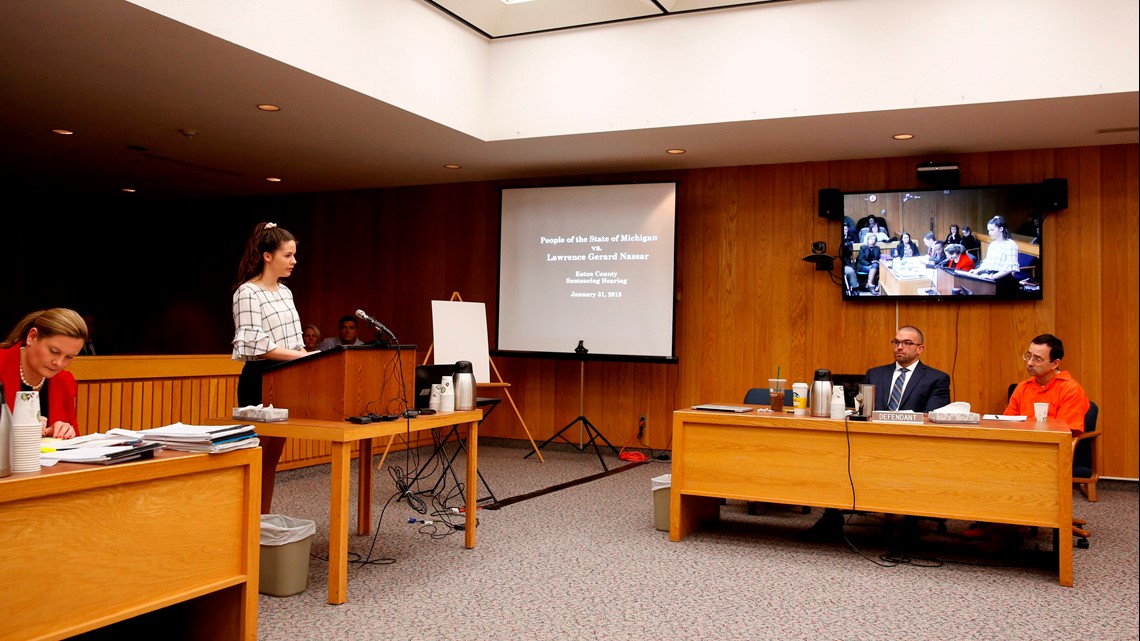
Some still refused to believe. When asked the child pornography, Klages, the MSU gymnastics coach who had known Nassar for decades, floated the possibility that police had planted the evidence, according to a lawsuit.
Lindsey Lemke, who spoke at Nassar’s sentencing, said in court that Klages held a team meeting in September 2016 at which she defended Nassar and asked athletes to sign a sympathy card for him.
Klages, whose attorney declined comment, was suspended by MSU in February 2017 for the way she handled that meeting. She resigned a day later.
The child pornography was the final straw for Karageanes and many of Nassar’s other supporters.
Christy Lemke-Akeo, whose daughter Lindsey Lemke had been a gymnast at Twistars and MSU, had initially considered helping Nassar.
When the accusations against Nassar first became public, Lemke-Akeo said she asked her daughter if she had been abused and her daughter said, no. So they initially decided to stand by the man they thought was their friend.
Nassar had played several different roles to gain their trust: friend, neighbor, doctor and even a babysitter of sorts, encouraging them to run errands while he treated Lemke after hours. He would do anything to be helpful, said Lemke-Akeo.
Some of Nassar’s seemingly kind acts should have been red flags. When Lemke-Akeo injured her shoulder, Nassar examined it. If Lemke-Akeo was ill, he would write her a prescription. He didn't bill their insurance. Nassar once gave her daughter a muscle relaxer at his house for her back pain, which Lemke-Akeo questioned but dismissed as Nassar being nice.
Lemke-Akeo said she “flipped out” when she heard about the child pornography. She confronted her daughter again.
"I said, 'how many times did he do it to you?' She said, 'Every time.’ So she had been seeing him since she was 10 years old up until she was 20 and every time he saw her he was doing that to her," Lemke-Akeo said.
‘Nobody gets the benefit of the doubt’
Looking back, Hulliung, the coach who reported Nassar’s assault on Ursch, said he’s embarrassed that he didn’t report it months earlier. If he could go back, he said he would make a different choice.
"As a parent or a coach in a position to safeguard children, I think you cannot give people the benefit of the doubt," he said. "I think maybe we learned that, or I learned that, the hard way. When you’re that safeguard of children, nobody gets the benefit of the doubt, no matter their reputation or credentials."
Hulliung sees Nassar’s abuses as a "great motivator to get things right" — to create a gymnastics culture in which people don’t fear repercussions for expressing concern or asking questions when something doesn’t seem normal.
"The most egregious thing that happened wasn’t what Larry did," Hulliung said. "The most egregious thing that happened was that it was allowed to go on for so long."
About this story
This article is based on 1,583 pages of victim impact statements presented in Ingham County Circuit Court in Michigan in January. More than 150 women said Larry Nassar abused them over three decades, many when they were children. USA TODAY Network reporters at the Indianapolis Star, Lansing State Journal and Detroit Free Press conducted interviews with victims, doctors and coaches in multiple states.


